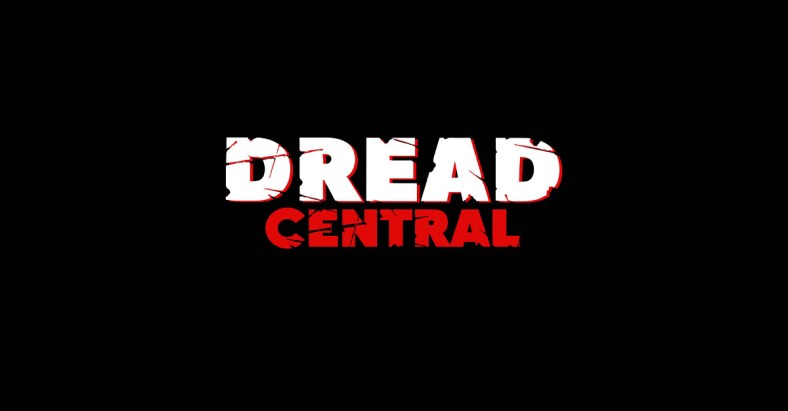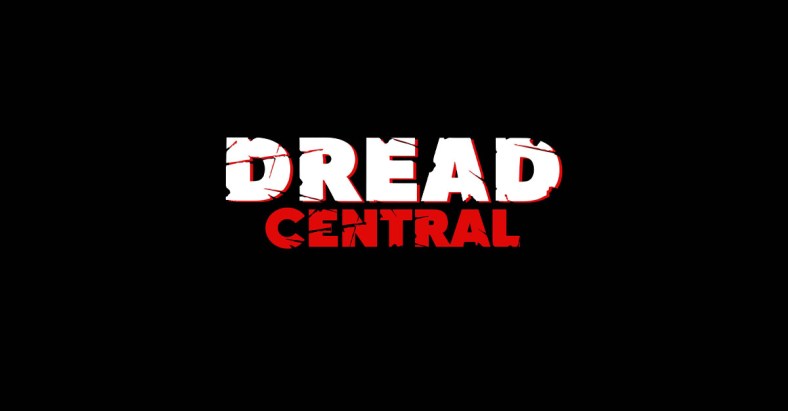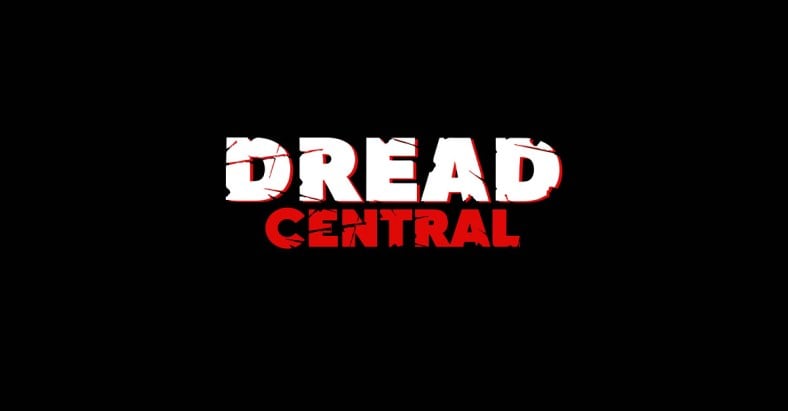Interview: Composer Ben Lovett on Scoring David Bruckner’s The Ritual

By now, we’ve all heard of the upcoming David Bruckner film The Ritual, which was acquired by Netflix last month. The story of a group of friends who get lost during a hike, The Ritual looks like it will be one of the most unsettling films of its kind in a long time.
Related Story: Interview: Cinematographer Andrew Shulkind on Shooting The Vault and The Ritual
In order for many horror films to evoke any sense of fear, they’ve got to have a score that worms its way under my skin, seeping its way through my fingernails and coursing along my skeleton until it wraps itself around my skull. That’s why I was so interested in chatting with composer Ben Lovett about his compositions for the film. You can read our interview below.
Rafe Spall, Robert James-Collier, and Sam Troughton star in The Ritual, which is produced by Andy Serkis’ The Imaginarium.
Dread Central: You worked with David Bruckner previously on The Signal. Can you tell me a bit about working again with David after a decade?
Ben Lovett: Well he’s gotten pretty good at making movies. We’ve been friends for 20 years and we came up cutting our teeth together making experimental no budget indies. Our early experiences in filmmaking were forged in the same fires in a lot of ways, so we’ve developed a similar instinct for how we approach things. We’d been waiting for the right project to collaborate on ever since The Signal and this seemed like the right one. At its core, The Ritual is a story about a guy losing friends and it explores how relationship dynamics with your old friends changes as you all grow up and become different people. Bruckner and I have a group of old friends in common so it was uniquely interesting to investigate those topics with him. We’ve also both spent the past 10 years making movies with other people, so that helped bring a new perspective to the process of working together. We’ve developed an instinctual shorthand in our communication with one another, but each brought a new set of tools to the conversation.
DC: The Ritual looks like one of those horror films that plays with viewers’ expectations and confuses the reality of the situation. How does it work composing for a film where uncertainty and paranoia are key components?
BL: We knew a primary objective for the score was to establish the presence of something else out there with them. Well before you ever see it there should be a sense these guys are not alone out there, that there’s some obstacle lurking that will eventually intersect this whole adventure. The score is on a similar trajectory to what the characters’ awareness of that presence is, so the music starts out in more of a formless void as they near the edge of the forest, gradually taking on a more defined shape as the gravity of their situation comes into focus, until the later stages of the film where we’re getting fully formed, big cinema action cues and more sweeping melodic changes when the stakes are at their highest.

DC: Considering that the vast majority of this film takes place in a forest, what instruments or specific sounds did you use to convey a blend of horror and nature?
BL: The majority of the score is orchestral. I wanted to base it on an acoustic palette of instruments to reinforce the elemental aspect of what’s onscreen. As you said, almost every shot in the movie is external and the landscape is such a major factor in the experience of the characters, so it just seemed obvious to play instruments made of wood. I recorded with the London Contemporary Orchestra who are an exceptional ensemble of musicians known for their work with composers like Jonny Greenwood and Mica Levi. I needed to create specific textures and colors that were often beyond the boundary of what some might consider musical, so I needed players with great instincts who would understand how to articulate those sounds. I couldn’t imagine a better group of conspirators than the LCO, and their performances really elevated the material. There are also some dream sequences and a main theme associated with the central tragedy which sets up the movie that I approached differently. That event was something I wanted to keep in the forest with them, but it’s more of a memory that exists within the characters, so using synthesizers to create more of a dreamy soundscape seemed to be an effective way to keep those two threads sounding different from everything else that goes on in the physical environment of the woods.
DC: The trailer for The Ritual is packed with atmosphere, so what does it take to match the music with the visuals?
BL: Inspiration. As the composer you typically have the benefit of nearly every other department’s contributions to draw upon, and that can be a real benefit. David and (cinematographer) Andrew Shulkind captured the forest in a way that gives the visuals a distinct mood. I just wanted to make it sound like it looked. My scoring approach tends to value the way things sound (sonically) in equal measure to what those sounds are doing (musically). I approach them with an equal measure of relevance. I’m obsessed with sound and I’m always trying to paint with colors that doesn’t exist, trying to make a sound I haven’t heard before. For this film I wanted the score to contain sounds that were undefinable to the ear, things that could float imperceptibly between the sound design and instrumentation, appearing and disappearing out of nowhere. The nature of the story seemed to warrant that. That process is really more gut instinct than applied academics… you throw things at the screen and see what sticks.

DC: I always feel like the music of a film is an unseen character, one that lurks just beyond the frame. If you had to take your music and flesh it out as an actual interactable character, how would you describe it?
BL: Hmm. I suppose that character would be invisible so there’d be no comparative or objective way to describe it. I never really think of the score as a character because its conversation is with the audience. If it were to appear onscreen in some tangible way it would require having one foot on either side of the screen. I guess it’s like saying what kind of rock would the ocean be… as a thought experiment, once I move one thing into the container of the other a fundamental aspect of the original identity is lost and my brain implodes.
DC: What’s next on your schedule?
BL: I just finished scoring the documentary ‘Tommy’, an ESPN 30 for 30 film about the life and death of former heavyweight boxing champion Tommy Morrison who was diagnosed with HIV and continued trying to fight. I’m wrapping up score right now on a new feature by Dan Bush called ‘The Dark Red’ then starting work on another documentary next month called ‘Stuffed’ about the strangely fascinating subculture of taxidermy.

Categorized:News

